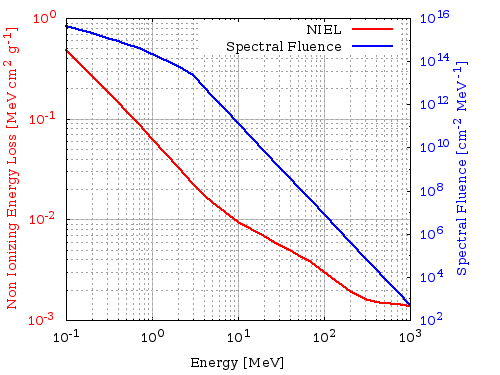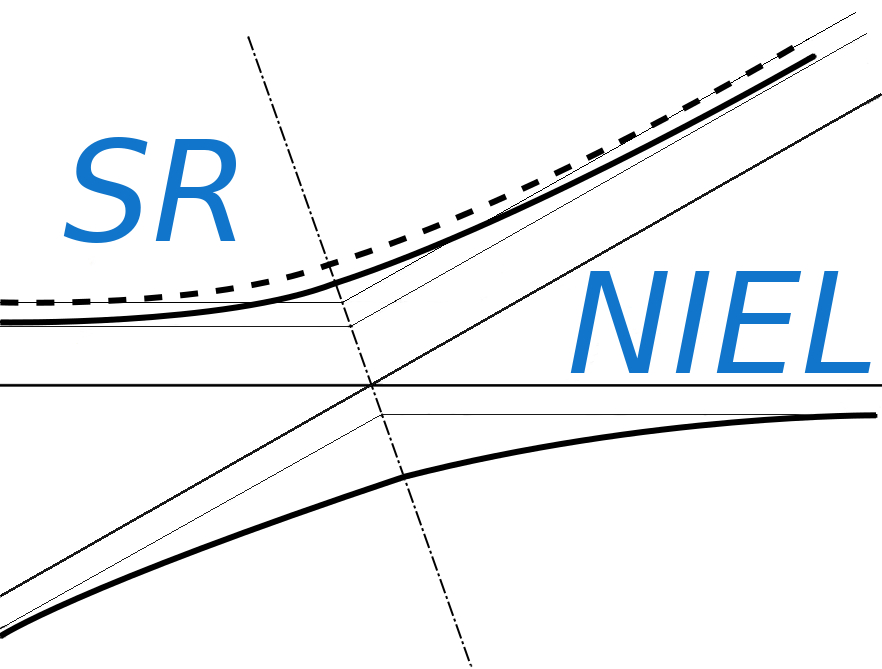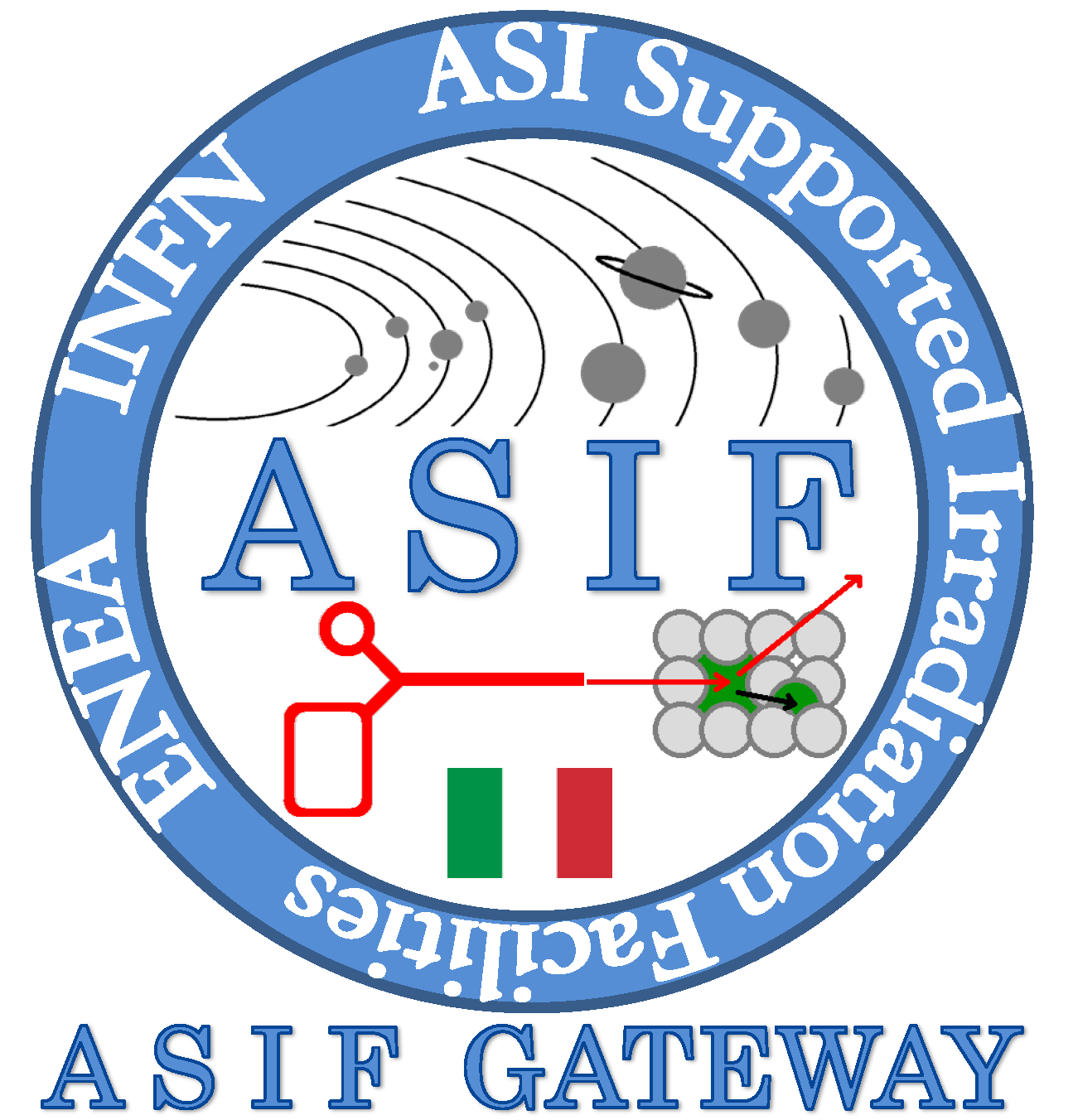 Spectral fluence data are calculated with JOREM Model implemented in SPENVIS assuming a 4π solid angle exposure.
Spectral fluence data are calculated with JOREM Model implemented in SPENVIS assuming a 4π solid angle exposure.
- Ga: 21.5 eV, As: 21.5 eV as reported in [Campesato et al. (2019)] from proton, electron and neutron irradiations of solar cells. In Triple Junction solar cells, in which the dominat damage mechanism is that one due to the GaAs middle junction, a commonly effective value of Ed was 24 eV [Campesato et al. (2018), Campesato et al. (2019)].
- Ge: 40.5 eV as reported in [Campesato et al. (2019)].
- In: 43 eV, Ga: 21 eV, P: 21 eV as reported in [Campesato et al. (2018)] for In0.49Ga0.51P single junction solar cells irradiated with electrons and protons. In [Campesato et al. (2019)] with electron, proton and neutron irradiation, it was shown that a commonly effective value of Ed=38 eV can be employed in an equivalent way.



